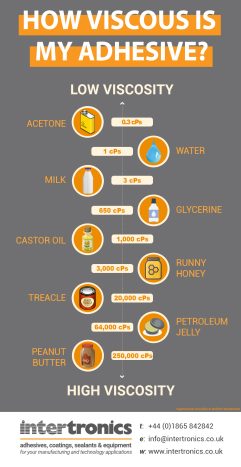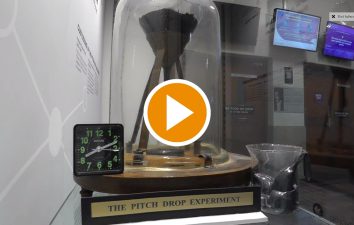 Viscosity is the resistance of a fluid to flow. This means that different fluids with different viscosities will flow at different rates under the same force. The higher a viscosity a fluid has, the harder you have to push it to move it. We call a higher viscosity fluid more viscous. You can see why viscosity is one of the important factors we need to consider when specifying dispensing or material application equipment.
Viscosity is the resistance of a fluid to flow. This means that different fluids with different viscosities will flow at different rates under the same force. The higher a viscosity a fluid has, the harder you have to push it to move it. We call a higher viscosity fluid more viscous. You can see why viscosity is one of the important factors we need to consider when specifying dispensing or material application equipment.
The unit of measure we use to describe viscosity is the pascal-second (Pa·s), or more usually the millipascal-second (mPa·s). We also use centipoise (cPs or cps or cP), which is equivalent to mPa·s. The viscosity of water at 20°C is almost exactly 1 mPa·s or 1 cPs. The higher the value of viscosity, the “thicker” the fluid is.
We supply materials across a broad range of viscosities, from watery-like cyanoacrylate adhesives with single-digit centipoise figures, right the way up to really thick silicone sealants with viscosities in the hundreds of thousands. To give you some guidance on what product datasheet viscosity numbers mean, here are some examples for materials you are probably familiar with (click for a larger version).
Of course, some fluids fall much higher up the viscosity scale, such as bitumen, commonly used in road construction, roofing or waterproofing. Believed to have a viscosity around 100 billion times larger than that of water, a viscosity test of bitumen has the title for the world’s longest continuously running laboratory experiment, with each drop of material taking between 7-13 years to form and fall.
If you find yourself in a lull and are looking for a way to pass the time, you can watch the experiment.
Categories: adhere academy, technical guides


